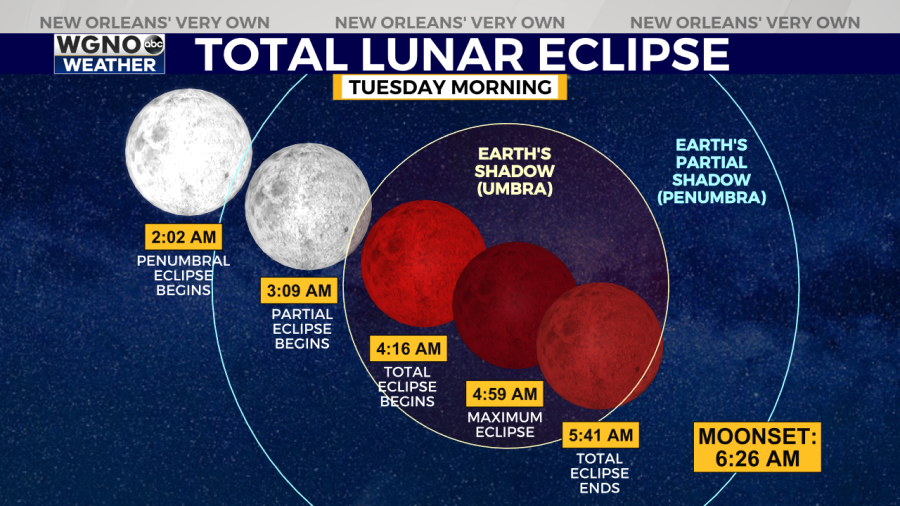NEW ORLEANS (WGNO) — The Earth, sun and moon will align early Tuesday (Nov. 8) morning as a total lunar eclipse takes place.
The lunar event will be the second total eclipse visible from the United States this year, and the last to occur until 2025.

The total eclipse begins at 4:16 AM, peaks at 4:59 AM, and ends at 5:41 AM (all times Central Standard Time).
If you miss the total eclipse, you can catch the partial eclipse until the moon sets at 6:26 AM.
What is a lunar eclipse?
Our Moon doesn’t shine, it reflects light. Just like daytime here on Earth, sunlight illuminates the Moon.
During a lunar eclipse, Earth comes between the Sun and the Moon, blocking the sunlight falling on the Moon. The only remaining sunlight reaching the Moon at that point comes from around the edges of the Earth.
While the Earth’s atmosphere scatters away blue light from the Sun, red light passes through Earth’s atmosphere and refracts toward the moon. This causes the moon to have a reddish glow during an eclipse.
If you were on the surface of the Moon when the eclipse takes place, you would see all Earth’s sunrises and sunsets at once.
How can I see the eclipse?
You don’t need any special equipment to observe a lunar eclipse, although binoculars or a telescope will enhance the view and the red color.
A dark environment away from bright lights makes for the best viewing conditions.
Stay updated with the latest news, weather, and sports by downloading the WGNO app on the Apple or Google Play store and subscribing to the WGNO newsletter.



























